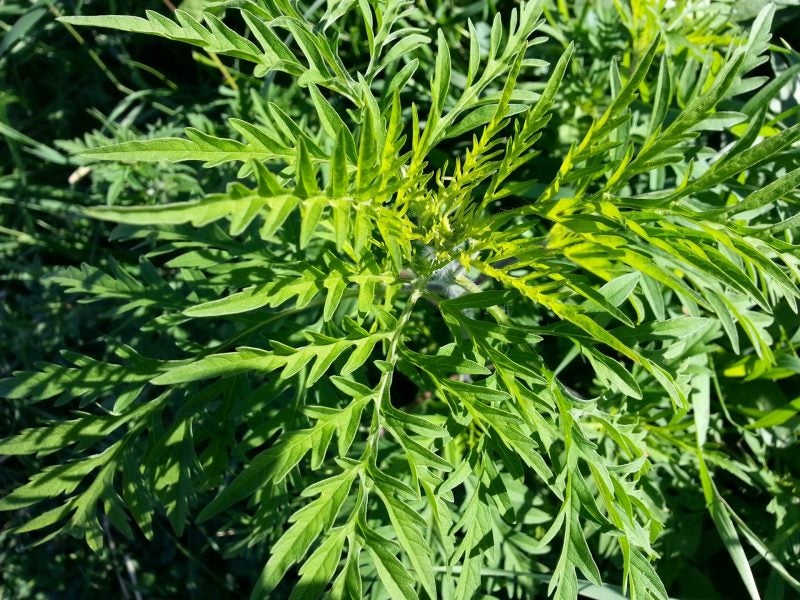It’s fall and summer flowers are no longer in bloom but you are still experiencing itchy, watery eyes, a runny nose and having sneezing fits. If you thought that you left your allergies behind just because summer is over, think again. You can experience symptoms any time of year, including the fall. To help you learn more about fall seasonal allergies, we spoke with Dr, Yvette Lu, a family physician, actor and film maker based out of Vancouver, BC. She is the host of “House Call with Dr. Yvette Lu”, an award-winning short form series about caregivers. She shared everything that you need to know about getting through fall seasonal allergies.
What is the most common allergy trigger in the fall?
The most common allergy trigger in the fall is ragweed. Ragweed is a weed found mostly in Southern Ontario and Quebec. Its flowers bloom from late August to October , and a single plant can produce upwards of one billion grains of pollen each season. The pollen grains are lightweight and can be carried farther than 250km by the wind.
Are fall seasonal allergies as severe as spring allergies? Are the symptoms the same?
Many people who suffer from spring allergies may also suffer from fall allergies, and reactions can be just as severe. Everyone’s bodies will have different reactions depending on the severity of their allergy, what they’re allergic to, and what pollens are in the air. Fall and spring seasonal allergies have the same symptoms, including runny nose, itchy and watery eyes, sneezing, coughing, and headaches.
Allergies can often be mistaken for a cold or flu. What are the differences?
People experience allergies when their immune system mistakenly identifies allergens as a threat. Allergens include pollen, dust, mould, and pet dander. The presence of an allergen in the body stimulates immune system cells to release chemicals that result in experiencing allergy symptoms.
A cold or the flu is caused by a virus entering the body. A cold is typically milder than the flu, and symptoms include a cough, runny nose, fatigue, and sneezing. Flu symptoms include fever, aches, chills, fatigue, cough, headache, and sometimes a sore throat/runny nose.
Sometimes allergies can be mistaken for a cold or the flu. One of the ways to tell the difference between a cold or the flu and allergies is to look at the length and onset of your symptoms. A cold will arrive gradually and you may start to feel ill over the course of a few days. The flu typically arrives abruptly. Allergy symptoms occur when you are exposed to the allergen, so symptoms can come on gradually if the amount of allergen is gradually increasing in your environment, or more abruptly if there is a sudden increase of the allergen in the air. During peak allergy seasons, such as between August and November, you could be experiencing symptoms for that entire length of time. In contrast, colds and the flu usually last between 7-10 days.
If you have a fever, chills, and muscle aches, then you likely have the flu. You will not experience those symptoms with a cold or with allergies. Both allergies and a cold can cause a runny nose and a cough. Mucus caused by allergies is clear, watery, and thin. Mucus caused by a cold can be thick, yellow, or green. Knowing the differences between allergies, the flu, and a cold is key to helping you treat your symptoms.
What can allergy sufferers do to still enjoy being outdoors and outdoor activities?
Being proactive about your allergies will allow you to continue to enjoy time outdoors during allergy season. You can start by finding out what allergens trigger your allergies. You can ask your family doctor for a referral to see an allergist and get allergy testing. You can also look at the pollen count on days that your symptoms are more severe and try to figure out which pollens you are most sensitive to. Once you know what you are allergic to, you can look at the pollen count in the morning. If the pollen count is high, then you can take an antihistamine before you go outside. Histamine triggers many allergy symptoms, so taking the antihistamine early in the day before you are exposed to the allergen will help keep your symptoms under control. I recommend that people take a non-sedating antihistamine, such as Reactine (cetirizine), as these medications can relieve symptoms like sneezing, itchy eyes, runny nose, and nasal congestion for up to 24 hours.
If you are planning on spending the day outdoors, wearing a hat and sunglasses can help keep pollen and other allergens out of your face. Try to avoid heading out in the morning between 5-10 am, as this is when pollen counts tend to be higher. For chronic sufferers, it is safe for most people to use antihistamines daily, but it is always important to connect with your doctor if you are taking any medication long-term to make sure there aren’t any other medical problems that need to be treated. If your symptoms are not improving after taking antihistamines, check in with your family doctor or health care provider.
As the weather gets colder, mould can also be a trigger. What steps can people take to eliminate mould as they spend more time indoors?
Mould spores are allergens like pollen and when inhaled can cause similar symptoms in people who are sensitive to them. Often, people are exposed to mould indoors in their home or at work. Antihistamine therapy is also helpful to reduce the symptoms from mould allergies.
Prevention is also important when dealing with indoor allergies, and controlling the amount of dampness in your home can help eliminate indoor mould. Mould thrives in damp, humid environments. Use exhaust fans in bathrooms, laundry rooms, and basements, as these are rooms that tend to experience dampness and humidity. Ensure there are no leaks in any rooms and that rainwater drains away from your house. A dehumidifier is another great tool to control mould in your home.
How are fall seasonal allergies treated?
Depending on your symptoms, fall allergies can be treated with a variety of medications. If you have symptoms throughout your body, including runny nose, itchy eyes, fatigue, headaches, and sneezing, then you can take a non-sedating oral antihistamine. Antihistamine medications can be obtained over-the-counter or by prescription from your doctor. Different formulations and doses are available. For children, liquid versions are available and for people who can’t swallow pills or who want faster results, oral dissolving tablets are available, like Reactine Rapid Dissolve.
For primarily nasal symptoms, you can talk to your doctor about trying a nasal corticosteroid spray, and for itchy eyes, you ask your doctor to see if an antihistamine eye drop would be appropriate. You can also talk to an allergist about getting immunotherapy and allergy shots, which can help desensitize your body to allergens and reduce your symptoms.




















